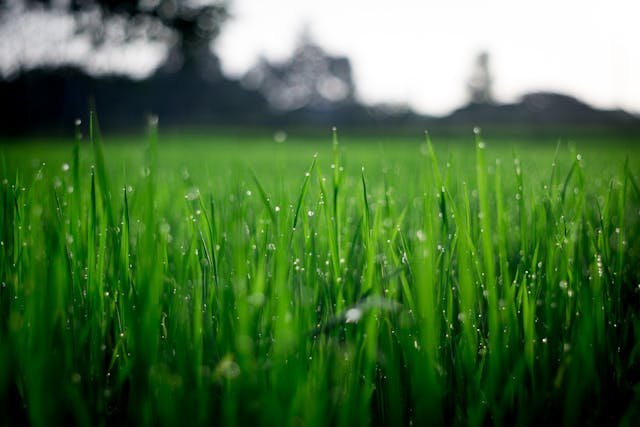Maintaining a healthy and vibrant lawn may be difficult, particularly for those who lack the time or expertise to address various issues effectively. Several factors, such as pests, poor maintenance practices, and environmental conditions, can cause lawn issues. These problems not only reduce a yard’s visual attractiveness but also could influence property prices. Using expert maintenance services is a sensible way to preserve and improve the health of a lawn. Here are four common lawn problems that these services can help with, resulting in a lush and thriving landscape.
1. Compacted Soil: The Hidden Enemy of Grass Growth
Many lawns suffer from compaction from foot activity, heavy equipment, or even natural events like rain. The compaction of soil reduces the spaces between its particles, therefore restricting ventilation, water absorption, and nutrient absorption. Weak growth and brown patches result from the grass roots’ inability to pierce the compacted layer. Maintenance services frequently use aeration, which involves removing small soil cores to relieve compaction, to address this issue. This method helps to enhance root growth and soil structure, therefore enabling grass to thrive. Furthermore, lawn fertilization techniques can be carried out after aeration to restore vital nutrients, therefore promoting recovery and a lush, green appearance. Aeration of compacted soil and consistent monitoring help to avoid long-term damage while promoting a healthier grass environment.
2. Pest Infestation: Protecting the Grass from Unwanted Guests
Lawns may be seriously disrupted by pests such as armyworms, chinch bugs, and grubs, which results in unsightly damage and compromised grass health. In extreme situations, these bugs cause browning, thinning, and even total die-off by feeding on grass roots, stems, and blades. To avoid serious damage, pest infestations must be promptly identified and dealt with. To properly manage pests, professional lawn care services use integrated pest management (IPM) techniques, which mix chemical, biological, and cultural treatments. Maintaining appropriate lawn care techniques, such as cutting the grass at the right height and watering it enough to encourage strong growth, may be one example of cultural controls. While focused chemical treatments may be required in severe circumstances, biological approaches include introducing helpful insects that target destructive pests. Along with controlling current infestations, a thorough strategy guarantees a healthier and more resilient lawn by helping to build an environment that deters future pest problems.
3. Nutrient Deficiencies: Restoring Balance for Optimal Growth
Common problems in lawn nutrient shortages usually arise from inappropriate fertilizing methods, poor soil condition, or overwatering. Grass development and growth depend on basic minerals like nitrogen, phosphorus, and potassium. Any of these nutrient deficiencies can cause growth retardation, discoloration, and heightened vulnerability to pests and disease. Professional lawn care companies use soil testing to find nutrient levels and imbalances, therefore enabling customized lawn fertilizing plans that target certain shortages. For example, nitrogen encourages rich, green growth; phosphorus helps root development and flowering. Applying the correct fertilizers at the right times will help to restore nutritional balance, therefore producing a vivid and healthy lawn. Moreover, frequent upkeep measures like topdressing with organic compost help to improve soil condition and guarantee long-term nutrient availability, thus encouraging continuous grass vitality.
4. Thatch Buildup: The Barrier to Healthy Grass
When thatch, a layer of organic matter that builds up on the soil’s surface, gets thicker than half an inch, it can cause issues. Although a small amount of thatch helps lawns by serving as a cushion and moisture retention, excessive amounts may impede water and nutrient absorption and result in unhealthy grass. Thatch can also promote pest infestation and disease development. Dethatching, a procedure that eliminates extra thatch to restore appropriate soil moisture and airflow, is an efficient way for maintenance services to manage thatch. Specialized tools that cut across the thatch layer will enable dethatching to be carried out and the thatch layer removed. After dethatching, lawn fertilizer is typically applied to revitalize the grass, therefore encouraging recovery and good growth. Combining regular dethatching with appropriate lawn care techniques can assist in maintaining an ideal thatch level, therefore guaranteeing a strong and healthy grass.
Conclusion
In conclusion, addressing common lawn issues with professional maintenance services can transform any outdoor space into a thriving landscape. These services provide the necessary solutions that improve grass health and appearance, from handling compacted soil and insect infestations to fixing nutrient shortages and reducing thatch growth. Regular lawn care investments help property owners to have a vibrant green space that not only improves curb appeal but also fosters a sense of pride in their homes.




